French dancer, choreographer, and entrepreneur Dimitri Chamblas became Dean of the CalArts School of Dance in 2017. In those two years Dean, Chamblas has worked with the dance faculty to bring about several major shifts in the school’s curriculum. The first change that I became aware of was the list of choreographers on the school’s 2018 Winter Dance concert at REDCAT. In the past, the Winter Dance program included works choreographed primarily by students, but here the entire program consisted of works by well-known choreographers Merce Cunningham, Trisha Brown, Jawole Willa Jo Zollar, Rennie Harris, and Jiří Kylián.
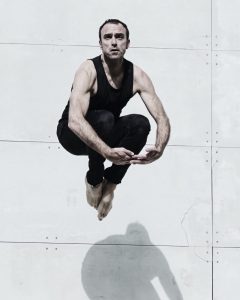
Dimitri Chamblas – Photo by Jacob Jonas
The 2019 Winter Dance concert again featured repertory dance works by visiting artists: Diagonal (part of Terrain), choreographed in 1963 by the legendary American choreographer and filmmaker Yvonne Rainer as staged by Sara Wookey; Du Désir D’horizons, choreographed in 2016 by world-renowned choreographer Salia Sanou; London choreographer Wayne McGregor’s 2010 FAR as staged by Louis McMiller; and excerpts from Mouth to Mouth (2014) and other works choreographed by Los Angeles’ own Danielle Agami, Artistic Director of Ate9 Dance Company, staged by Agami and company members Sarah Butler and Rebecah Goldstone.
The Cunningham work that CalArts students performed last year, Canfield as staged by Holley Farmer, premiered in 1969. In full disclosure, this author had the great honor of being in the original cast. I was not living in New York in 1963 when Rainer’s Diagonal was first performed but I did have several opportunities to see several of her works at Judson Church and other venues.
“I want CalArts to be the most amazing space for dance in the city,” said CalArts School of Dance dean Dimitri Chamblas. “Our annual Winter Dance Concert provides the opportunity to discover works new to Los Angeles and demonstrates the diversity of aesthetics, approaches, and ways of thinking both originating in and internationally converging here. Our dancers are at the avant-garde of the future of dance in America.”…..CalArts Winter Dance 2019 press release.
In March 2019, I interviewed Chamblas for LA Dance Chronicle. During our talks we briefly touched on the importance of dance students everywhere learning repertory works, so I contacted him a couple of weeks prior to Winter Dance Concert at REDCAT to further explore the subject. I was not interested in simply writing a preview article for the performance but wanted to hear Chamblas’ thoughts on how this change in curriculum had affected the students over the past year and a half.
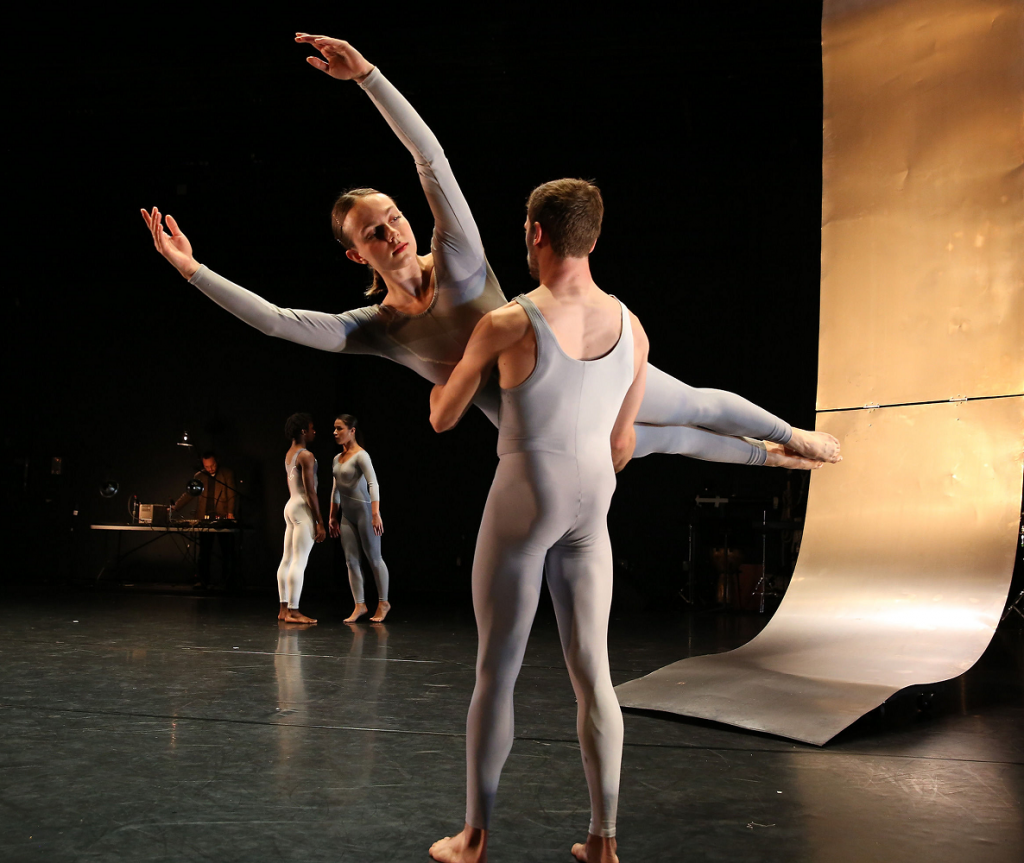
“CANFIELD MINEVENT” – Choreoraphy by Merce Cunningham – CalArts Winter Dance 2018 at REDCAT – Photo: Steve Gunther
Chamblas explained that he had recently been traveling a great deal and was very enthusiastic about sharing his excitement about what awaiting him upon his return. Walking through the studios on that day, Chamblas felt very encouraged about what the students were learning and the effects of that exposure and experience of learning and performing dances that were choreographed for professional dancers.
“I came back to CalArts and I went through the four studios to see the four works, and I said, ‘ok, here we go!’” He explained. “It is happening now. It was giving me so much enthusiasm and the energy that I needed, actually, after two and a half years here. We are really, really making everything happen that we could to help the level to grow, the thinking to grow, the shows to grow. It was a gift!”
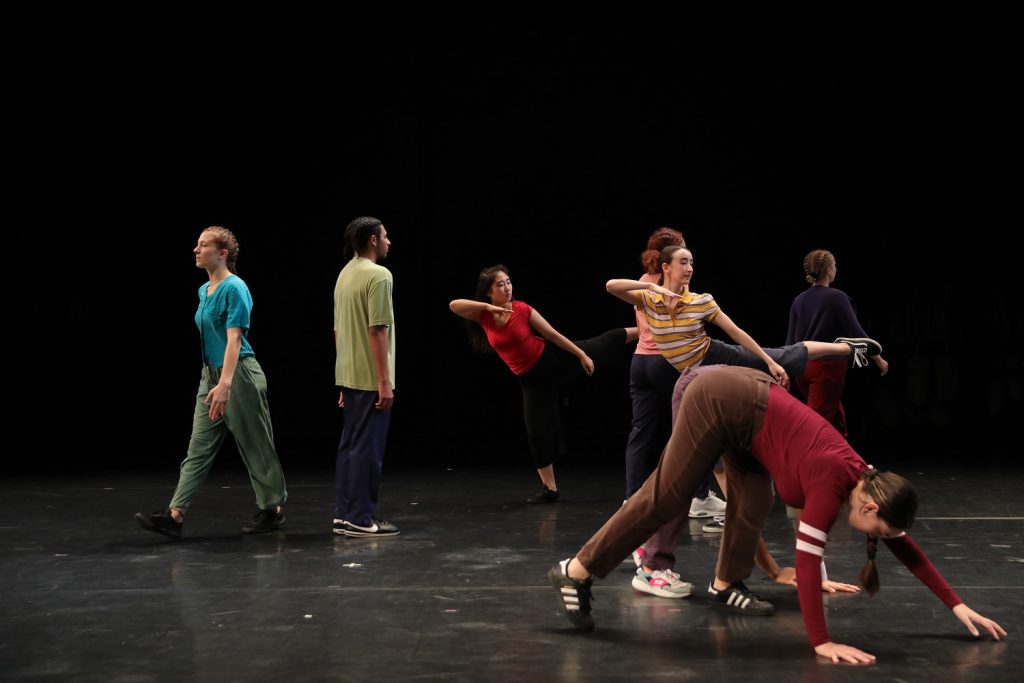
“Diagonal (part of Terrain)”, Original choreography by Yvonne Rainer (1963/2019) Staged by Sara Wookey – Photo by Rafael Hernandez, Courtesy of CalArts
The topics of the works on this Winter Dance are wide ranged, but Chamblas felt that overall the effect on the audience would be one of great energy, a strong relationship with the floor and the solid interactions between the dancers who Chamblas said were giving their all! “They were totally into it and so generous!” He went on to say that the hard work that the dancers were putting into this concert flies in the face of how the current generation is sometimes described as being lazy, selfish and always on social media. Chamblas did admit that some generations can be difficult, but for this concert he said that via their continuous hard work “They are giving us a gift.”
He had just introduced the idea of a full evening of repertory work when Chamblas and I first spoke about the importance of dance majors everywhere learning repertory and could not speak directly to the effects that it may or may not have had on the students. When arrived at CalArts in 2017, he was “surprised” that the option of learning repertory did not exist and it became a priority of his to include what he saw as a necessary ingredient in a dancer’s training. Now, however, he felt secure in addressing my original inquiry.
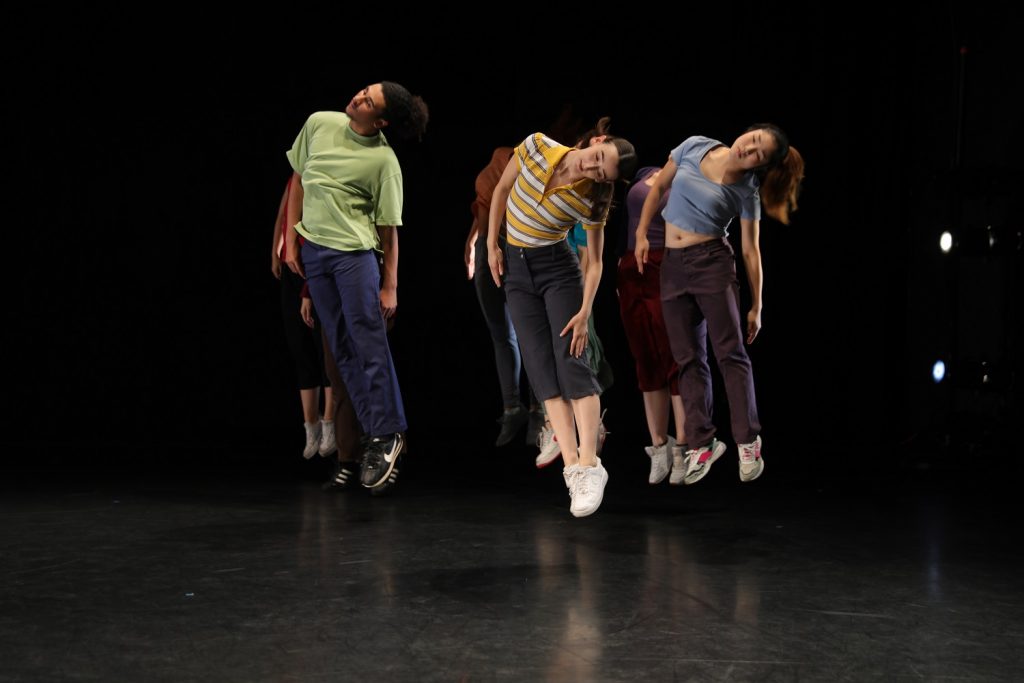
“Diagonal (part of Terrain)”, Original choreography by Yvonne Rainer (1963/2019) Staged by Sara Wookey – Photo by Rafael Hernandez, Courtesy of CalArts
Prior to his arrival, dance students at CalArts had primarily created their own work and therefore their individual movement memories came from within themselves. When students learned Canfield last year, Chamblas saw how it helped them understand “that the thinking was not exclusively in the classroom. In the studio you can think, you can discuss, you can try and you can dance such as in a classroom. In the studio you can be creative, you can invent, you can write, and you can critique.” It is this balance between what takes place in the classroom with how it feels to be in the studio working with a professional choreographer that the students are discovering.
The students experienced this balance while learning Cunningham’s Canfield. “I love that!” Chamblas said. “By doing they understood that there were no choices between having to make intellectual research and very precise, complicated technique to perform. You don’t have to choose. You have to articulate that.”
He realizes that this is but one example of the importance of learning repertory but Chamblas feels that it is very crucial to how students begin to understand this major ingredient, especially if they hope to go out into the world and perform with a major company. Learning repertory does not detract from a dancer’s ability to choreograph or create new work. Indeed, it adds to the “movement history” and movement choices in their vocabulary.
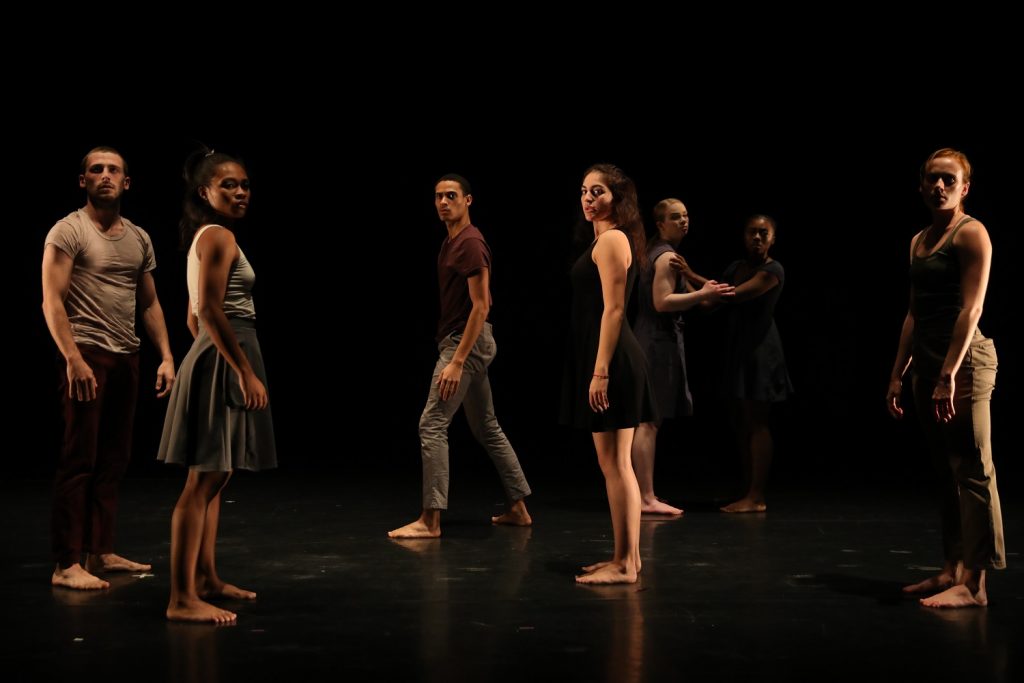
“Du Desir D’horizon” – Choreography and staged by Salia Sanou – Photo by Rafael Hernandez courtesy of CalArts
“This happened simply because we said that we were going to invite one of the major creators’ work (Cunningham’s Canfield) to come here.” Chamblas added. “It is not instead of us creating our own vocabularies and work, it is in parallel with that.”
Learning repertory helps students to understand that different dance styles were not just recently invented, but that some have been around for many years. This point became clear last year to the students who learned Facing Mekka choreographed by Rennie Harris in 2004. It helped the students to understand that Hip Hop not only had a history, but that it had geographical origins on both the east and west coasts.
“It is incredible in the thinking that repertory can bring.” Chamblas explained. “People say that repertory is great because you can go to a different technique. Yes! But, repertory makes you as a young dancer totally continue your approach and learn so many different things. So, inviting all those different dances is also inviting different theories, thoughts, modes of research, and chorographical techniques. It is a whole huge space that is opened just by bringing repertory here.”
Chamblas noted that it was the first-year students who learned and performed the Rainer work, Diagonal. He did not have to explain to them how to think about themselves onstage, or anything else about themselves as a performer. Simply by learning and working on Diagonal, he explained, all that was included in her work. “They get all those things because of this 15-minute diagonal thing that they are working on, and they will never be the same about what it means to be onstage.” He said. “Just by bringing a dance by Yvonne Rainer, they understand organically that what we want to see onstage is a human being, is a person, we want to have access through them as a person, and we want to have access to the dance itself, or the architecture of the piece itself.”
Learning to dance is more than just improving one’s physical technique. To help a choreographer realize their vision a dancer has to bring an openness, a commitment to that vision and the ability to express whatever physical and emotional qualities a choreographer is hoping to convey. While teaching I emphasized to my students that I did not want to see what they were (i.e. a dancer) but who they were. I did not want to see copies of me. I wanted to see who they were as dancers.
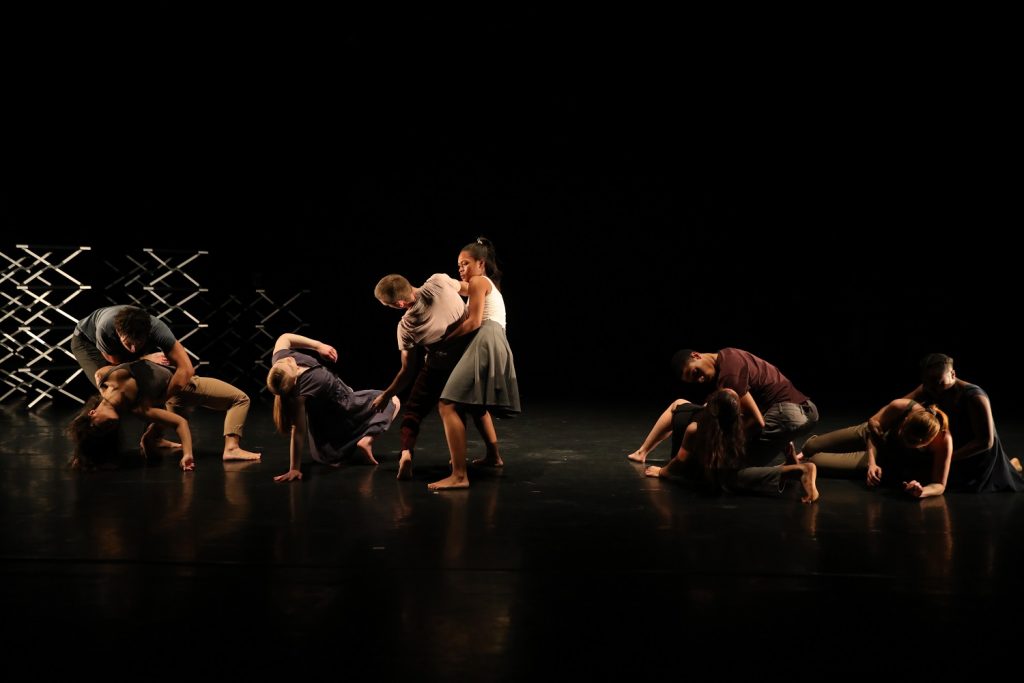
“Du Desir D’horizon” – Original choreography by Salia Sanou (2016), Staged by Salia Sanou – Photo by Rafael Hernandez, Courtesy of CalArts
“All of those things that are central, more than central, in the legacy of dance through the years, are coming to CalArts through repertory.” Chamblas said. He also stated that the full influence it is having on these students is very difficult to measure. The effects may not be known even to them for many years.
Repertory classes teach students about history. Is history something that we simply read about or is it a thing that we can experience? Chamblas expressed that the learning of repertory works, of course, teaches us to respect history, but also how we might play with history. It not only encourages dancers to hopefully not create dances that have already been choreographed, but how to blend history into their current work and to expand their ideas even further into something original.
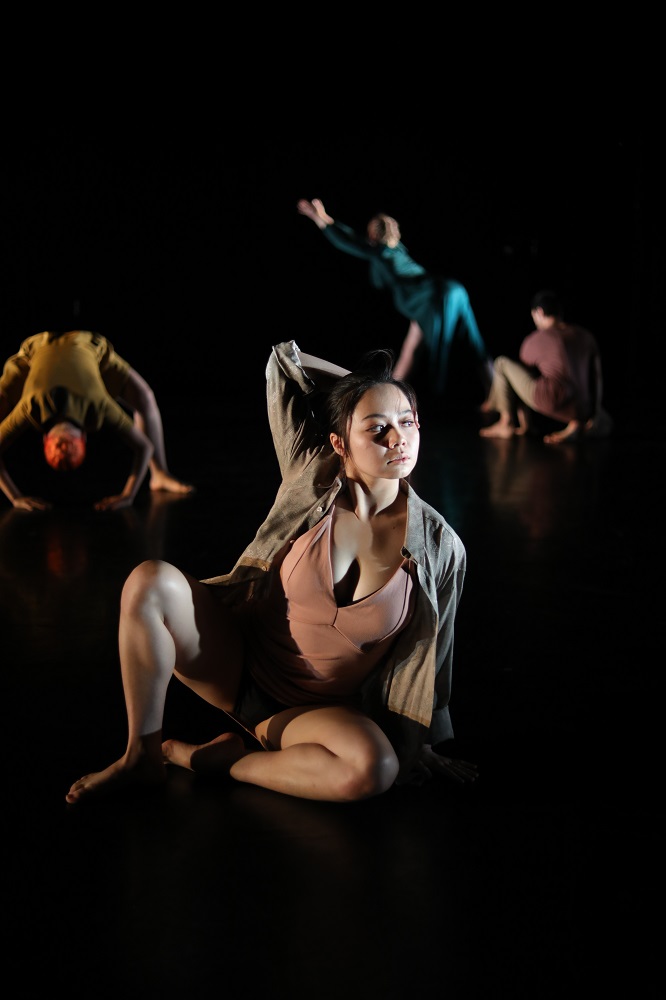
“Only then”, from a selection of excerpts of work by Danielle Agami Original choreography by Danielle Agami (2014/other) Staged by Danielle Agami and Ate9 company members Sarah Butler and Rebecah Goldstone – Photo by Rafael Hernandez, Courtesy of CalArts
There are many examples of this, of course, but one of my mentors, Merce Cunningham, who performed as a tap dancer, a musical theater performer and as a member of the Martha Graham Dance Company. He did all that before rejecting story dances, dances with an emotional theme, or dances connected to the music. He went on alter how we looked at dance by creating what became known as “pure movement” based work. The Grand Union dance group at Judson Church in New York was formed as a rejection of formal dance techniques. The list goes on of how dancers have integrated or responded to work by others to order to make original choreography.
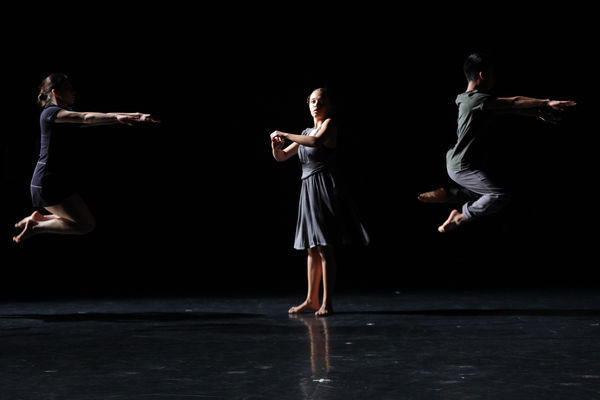
“Only then”, from a selection of excerpts of work by Danielle Agami Original choreography by Danielle Agami (2014/other) Staged by Danielle Agami and Ate9 company members Sarah Butler and Rebecah Goldstone – Photo by Rafael Hernandez, Courtesy of CalArts
“It is really this relation with knowing more and knowing where you come from.” Chamblas said. He wants the students to look back over their four years at CalArts and see the person that they have worked so hard to become. He spoke to the fact that the students do all this hard work for themselves, but that they also do it for the audience and for the future of dance, for the its heritage. “So, use it, take it.” He said. “You can like it, strike it or critique it. That’s part of the work; part of the game.”
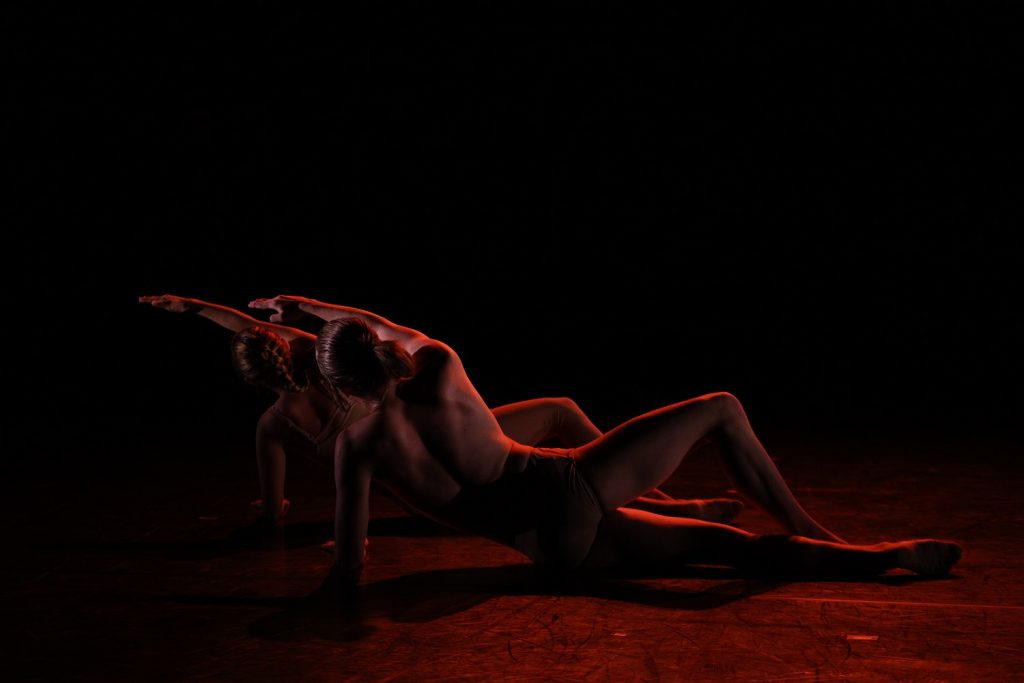
“FAR” – Choreography by Wayne McGregor and staged by Louis McMiller – Photo by Rafael Hernandez courtesy of CalArts
I was reminded of something that Viola Farber told me when I was interviewing her for my book, The Prickly Rose: A Biography of Viola Farber. She said, “When I first saw Merce’s work, I did not like it, but that I wanted to learn how to do it.”
Chamblas then posed a question. “When can we consider that a piece is part of a collective thing that is part of repertory?” He stated that Rainer’s Diagonal was performed in the ’60, but others on the program were choreographed as recently as 5 years ago. “Repertory is not only about Ballet Rousse, Merce Cunningham, and Martha Graham.” If a dance was created five years ago, does one keep it, transfer it to others or simply discard it? When does it qualify for repertory status? Does the answer depend on who the choreographer is, how highly they are regarded by the dance community, and so on?
We discussed how in the 1990s when many dance artists passed away as a result of HIV and AIDS, leaving others wondering what would become of their work. Chamblas had been working for only six months with a French choreographer Dominique Bagouet’s company when the choreographer died. The dancers were left with a huge question of what they should do with the heritage that (choreographer’s name) had left behind; questions like who owned which piece, who would re-stage the work, etc. If the choreographer left no instructions, then who does own their work?
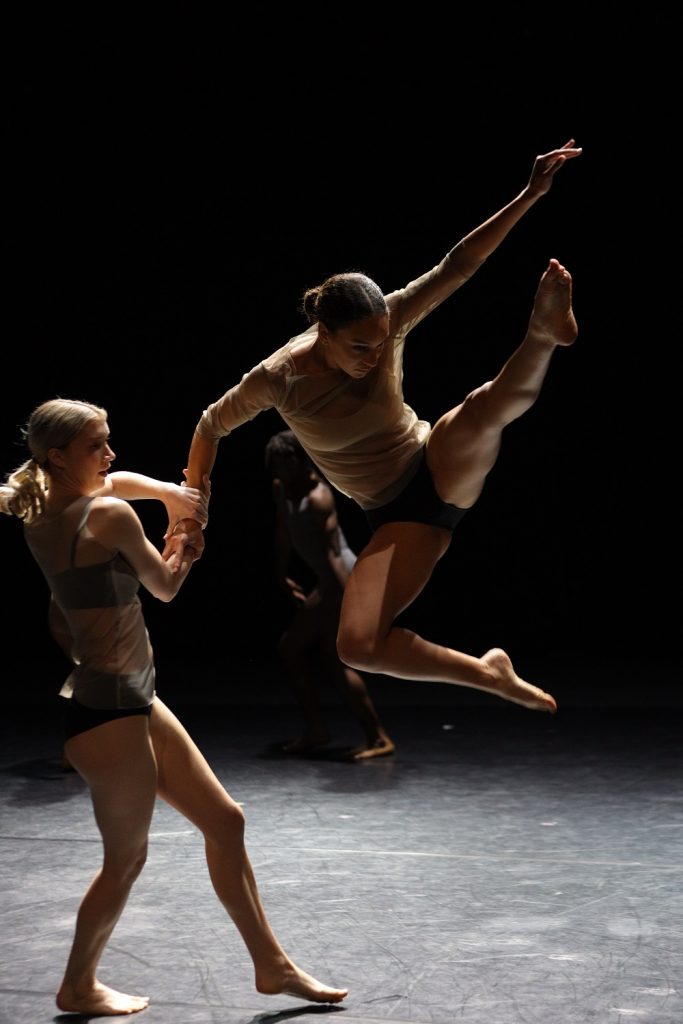
“FAR” – Choreography by Wayne McGregor and staged by Louis McMiller – Photo by Rafael Hernandez courtesy of CalArts
Chamblas pointed out that no matter when or on whom the work was first choreographed, the works on Winter Dance have been transmitted onto different bodies and performed in a city where they have never been seen before.
“Re-staging repertory is also giving the information of a desire that a nice piece, a strong piece will have many different lives at different moments in time and contexts. That this will be the life of that piece. We want to be a road for a piece to pass by here and continue its life.” Chamblas said.
This does not even begin to touch on how a particular dance might have on the lives of young dancers learning repertory. I remember a student at California State University, Long Beach who suddenly came alive after learning a dance by José Limón. It touched something inside her that no other dance style had reached. That work by Limn inspired her to move to New York in search of a professional career.
“If you’re only doing research of your own movements, of course you can push in this or that direction, but would you be as surprised as you would from diving into different dances and research, and informing your body as to what you’re going to do with this or that?” Chamblas questioned. “I strongly believe as a dancer; you can be many different bodies, and repertory gives you this information.”
Chamblas has never regretted introducing repertory to the CalArts School of Dance. “It has been gift after gift.” He said. “And I haven’t even talked about the people we’ve met through that.” He and I both are often shocked to learn that students do not know who many of these choreographers are; even the ones who are currently producing new works and touring the world with their companies. Bringing in artists to teach repertory is therefore teaching the students about their own dance heritage. Many dance artists like Trisha Brown worked with Yvonne Rainer back in the 1960s before going on to form their own companies. Now the students at CalArts have had the experience of performing in a work that dance artists William Davis, Albert Reid, Yvonne Rainer, Judith Dunn, Trisha Brown, and
Steve Paxton first performed in 1963 at Judson Church.
These interviews with Chamblas have not only led to a wonderful friendship, but they have sparked other areas or subjects that we wish to discuss, like what is history? “I think that through dance, participating in the conversation of what is inherited and what do we want to do with it, how it can grow, is what is very interesting to me” he said.
I look forward to sharing future conversations with Dimitri Chamblas and other dance artists with our readers.
Written by Jeff Slayton for LA Dance Chronicle, December 7, 2019.
To visit the CalArts School of Dance website, click here.
Featured image: “Du Desir D’horizon” – Original choreography by Salia Sanou (2016) Staged by Salia Sanou – Photo by Rafael Hernandez, Courtesy of CalArts.

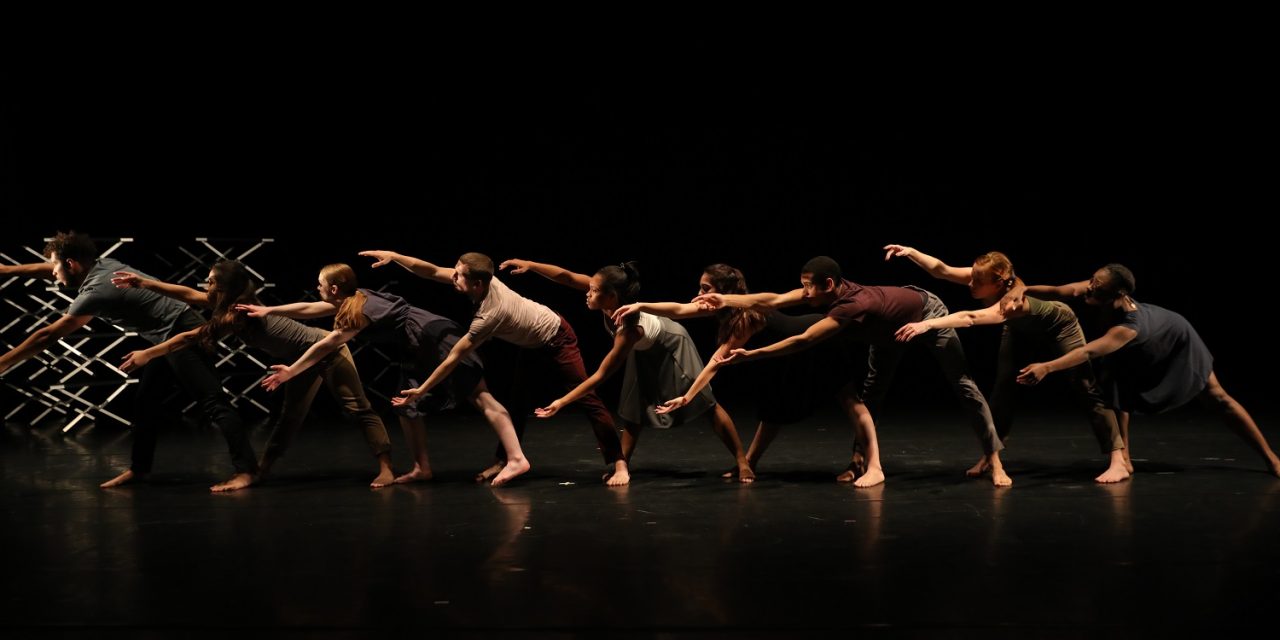
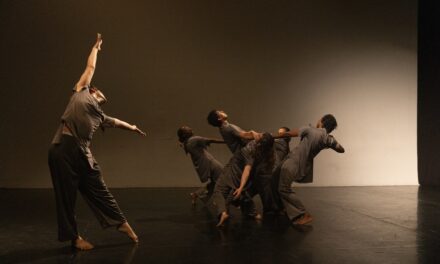
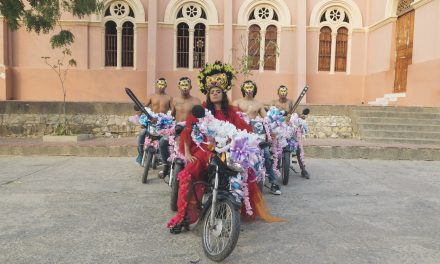
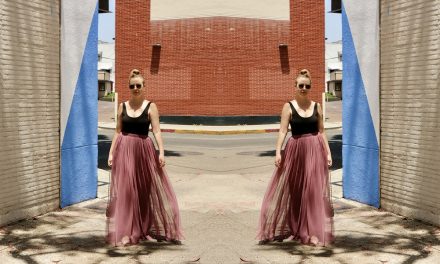
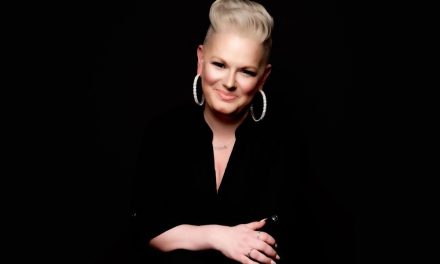


What a wonderful article, Jeff. Such a thoughtful addition to the discussion of dance in LA and beyond. Thank you!